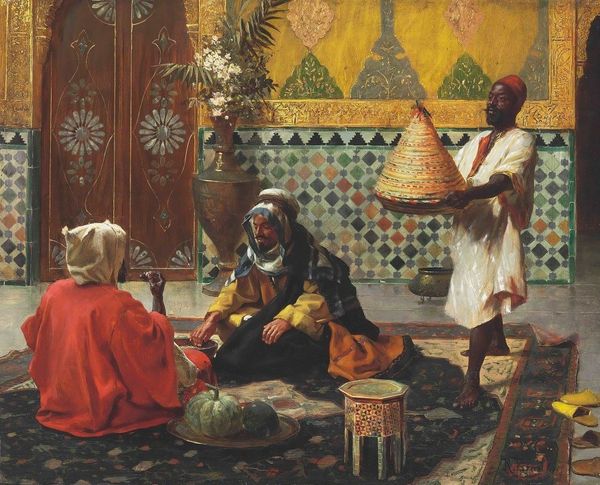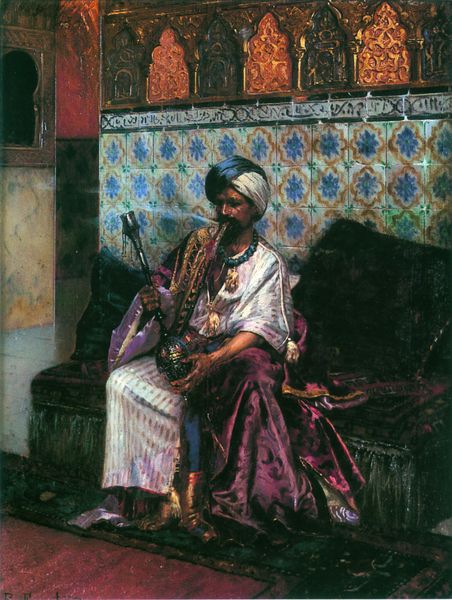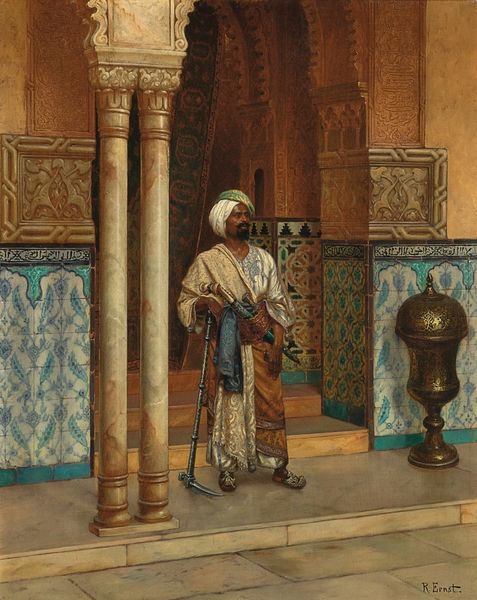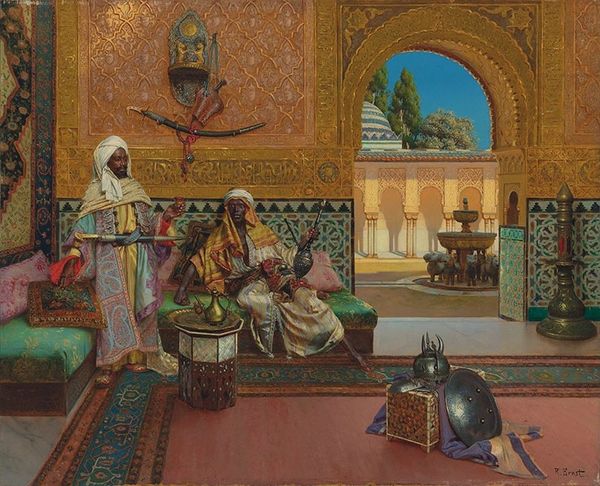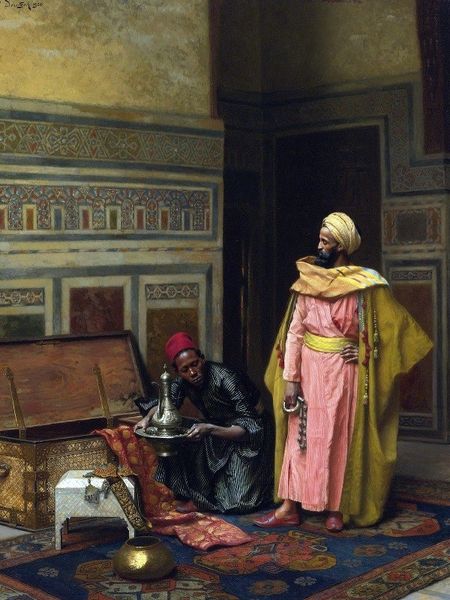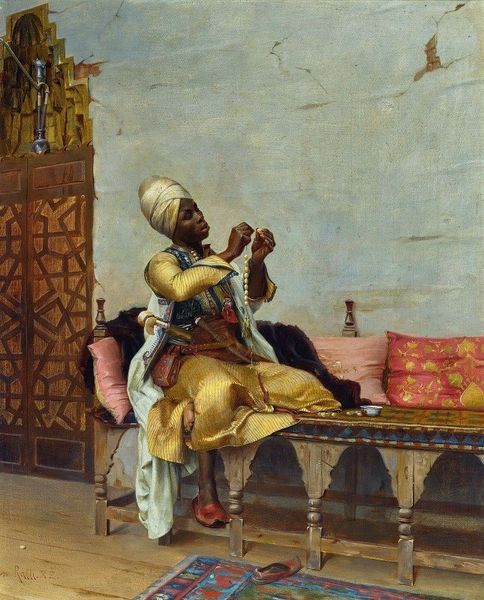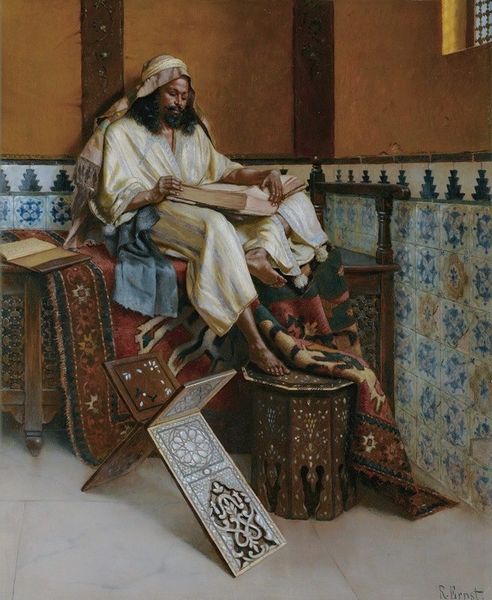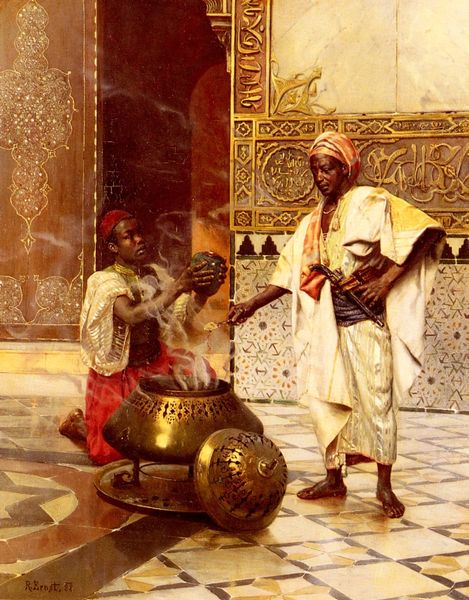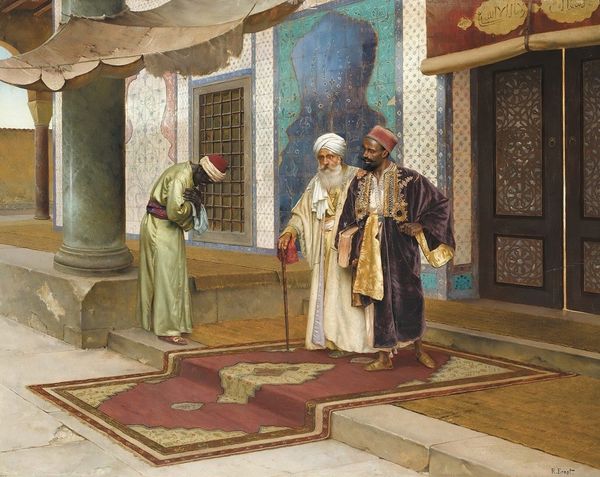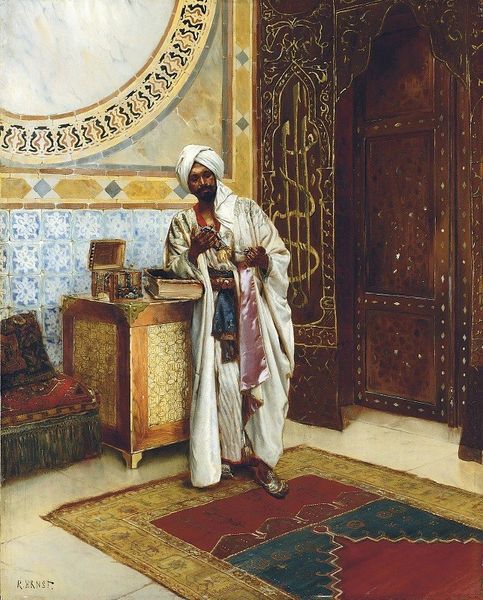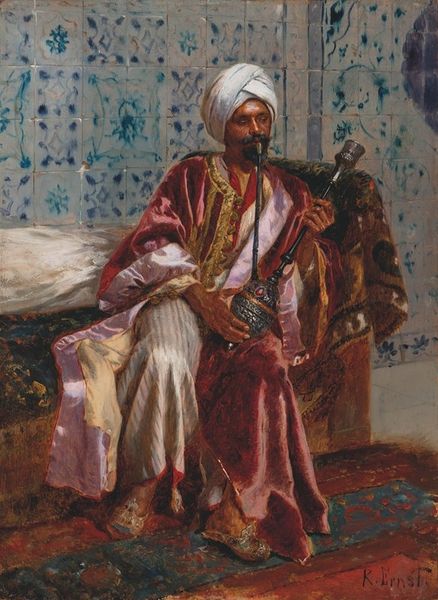
painting, watercolor
#
portrait
#
figurative
#
painting
#
figuration
#
oil painting
#
watercolor
#
orientalism
#
islamic-art
#
genre-painting
#
academic-art
#
watercolor
Copyright: Public Domain: Artvee
Curator: This is Rudolf Ernst’s, "The Musicians," painted in 1888. Ernst was known for his Orientalist themes. We see two men engaged in musical performance in what seems like an ornate interior. Editor: My first thought? It’s drenched in quietude. The details, especially the mosaic and the rug, give it a feeling of contained luxury, almost like peeking into someone's peaceful sanctuary. Curator: Absolutely, and the context of Orientalism here is crucial. Ernst, like many European artists of his time, was depicting his fantasy of the "Orient," a construction steeped in power dynamics. These works reflect and, unfortunately, perpetuated many stereotypes. Editor: Yeah, the details are so precise, they almost feel…imposed. But at the same time, I get a feeling that perhaps the intention might have been to appreciate these beautiful and interesting environments, without full knowledge of how it could be interpreted by later generations. Maybe the artist was trying to represent something exotic and romanticized through his own creative lens. The light seems almost reverent on the figures, don’t you think? Curator: I think what we have to appreciate are not only the surface aesthetics but also to critique its perspective, because, the visual language of the "Orient" often reinforced the colonial gaze, where Western identity and authority are implicitly validated. Ernst, we should mention, never actually visited the Middle East. Editor: Wow, okay, now I am having trouble making a fair assessment about this work. I thought this was supposed to be an accurate illustration from first hand knowledge. It feels now that it has been produced through cultural appropriation and with exoticized imagery and is more a reflection of the West. I think the role that art played in influencing political discourse by showing inaccurate realities is something that makes this difficult for me to interpret. I almost don't appreciate it anymore... Curator: And that's exactly what we need to do when we consider historical works that may appear simply aesthetic on the surface. It is important to explore not only what is visually offered, but what ideological narrative does this image convey? And how do its representation effect marginalized groups in the real world? Editor: Right, thanks. It changes the entire experience for me when it has been brought to light that is a constructed reality created through the biased views of an outsider! Now that I see the depth, I am forever changed!
Comments
No comments
Be the first to comment and join the conversation on the ultimate creative platform.
